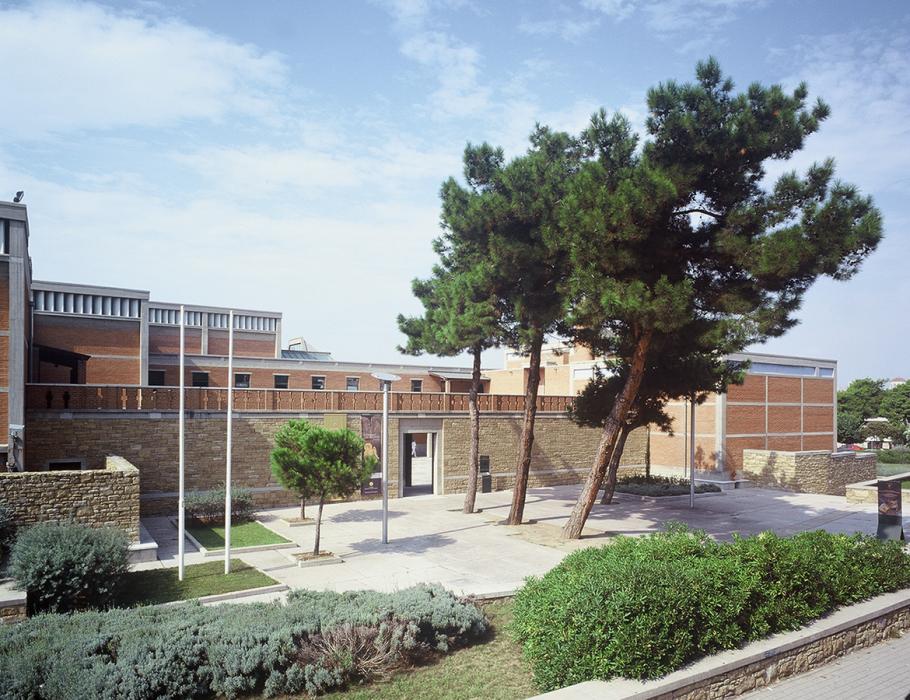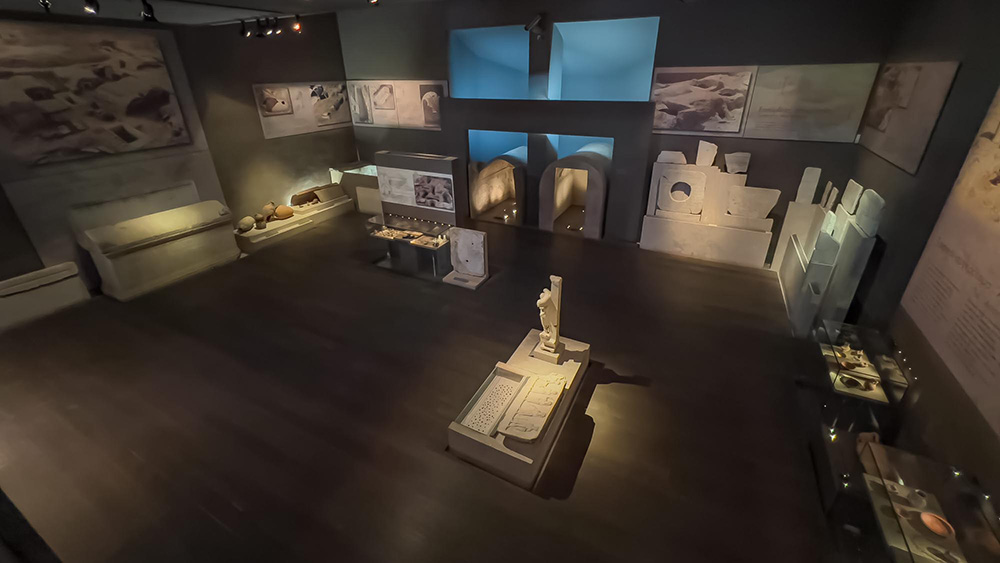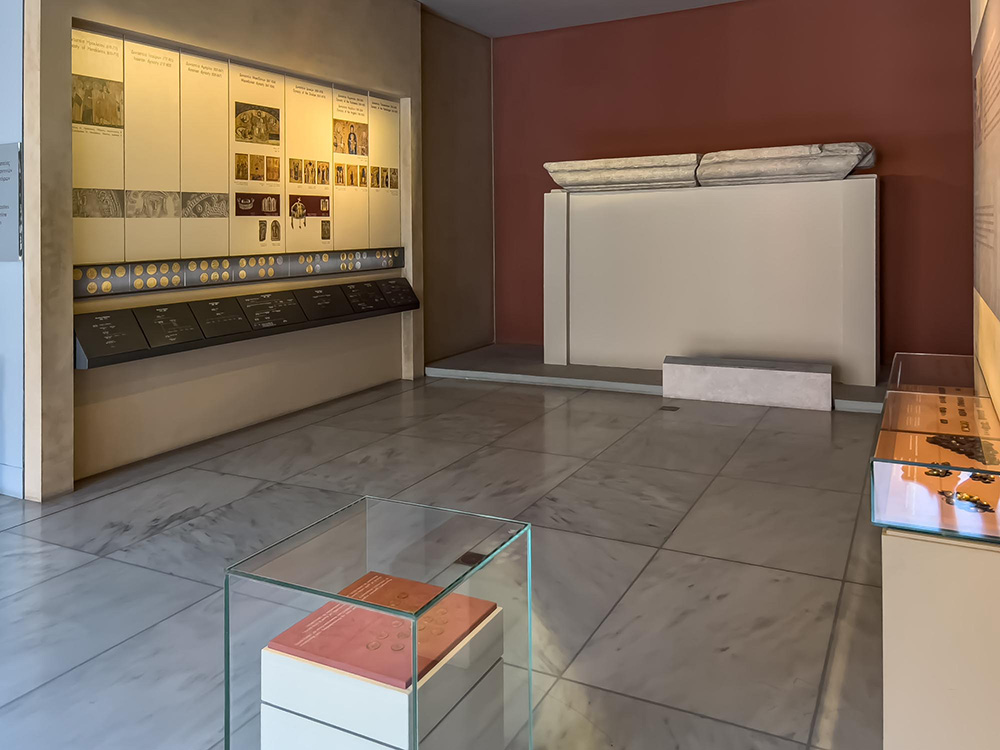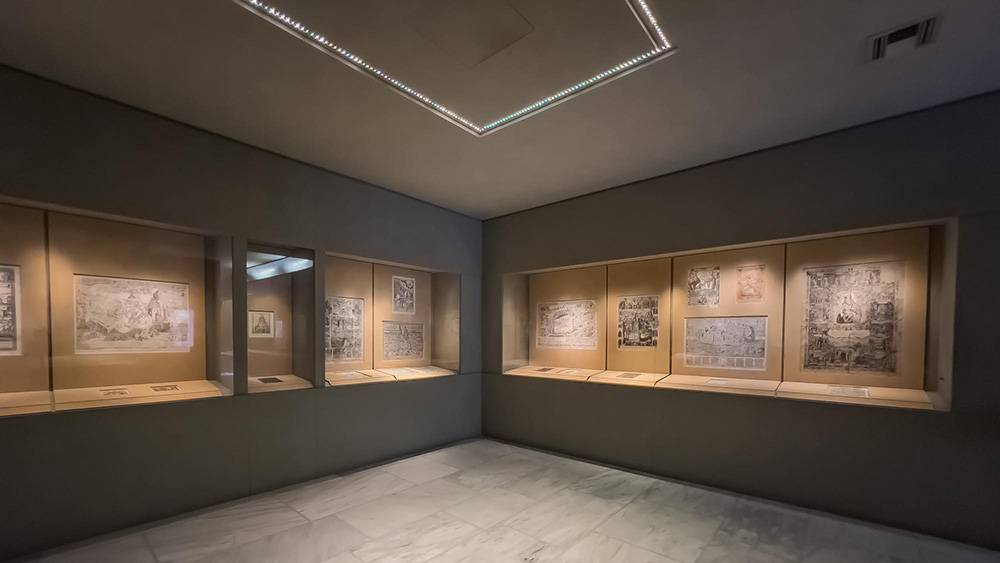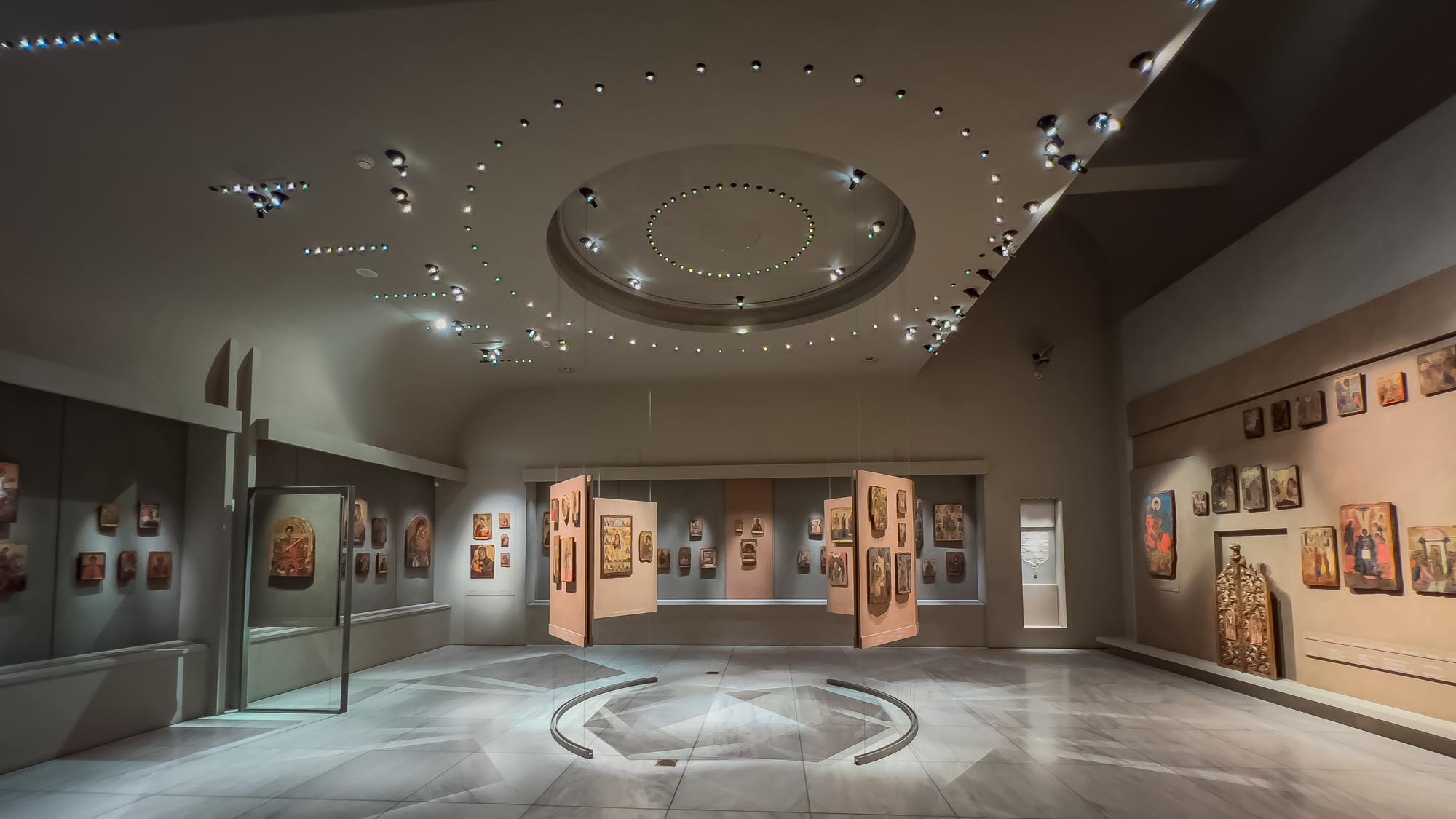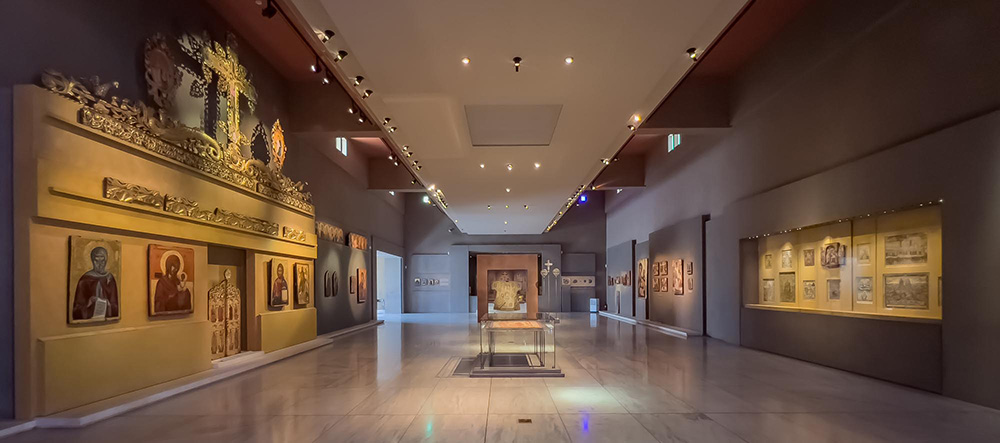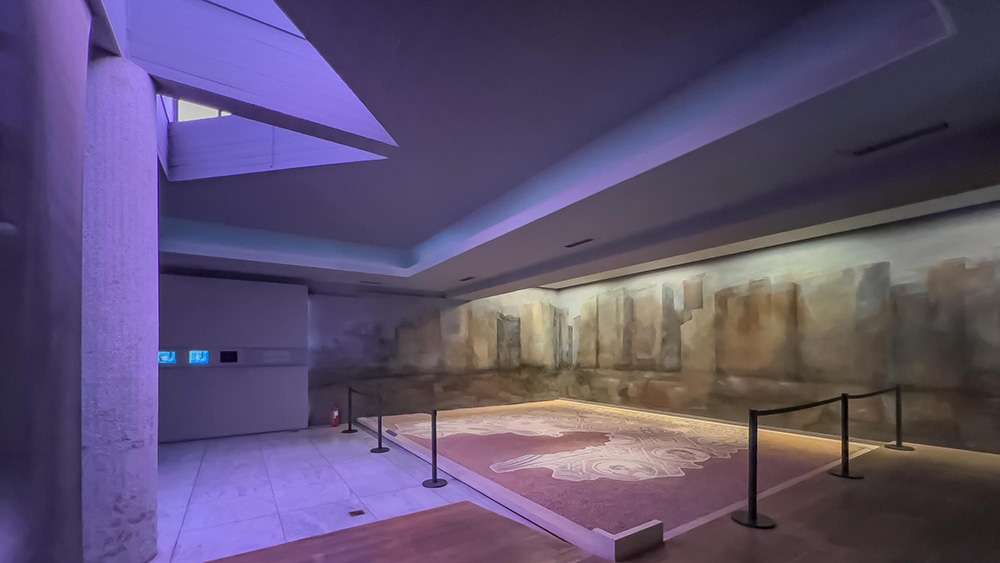This website uses cookies so that we can provide you with the best user experience possible. Cookie information is stored in your browser and performs functions such as recognising you when you return to our website and helping our team to understand which sections of the website you find most interesting and useful.
Permanent Exhibitions
The eleven rooms that comprise the Museum’s permanent exhibition opened gradually to the public from 1997 to early 2004. In a space of 3.430 square meters aspects of the Byzantine and post-Byzantine culture are presented, through the display of original artifacts, mainly from Thessaloniki, the most important city of the Empire after Constantinople, but also from the wider area of Macedonia. Using an accomplished and imaginative exhibition design, the display is organized into general themes and according to the established periods of Byzantine and post-Byzantine art and history. From a collection that numbers more than 46.000 artifacts, 3190 were selected for display, namely heirlooms and artworks dated between the 2nd and the 20th centuries. Wall-paintings, mosaics, icons, marble architectural elements, detached Early Christian tombs with their wall-paintings, liturgical vessels, implements for personal adornment, but also humble everyday artifacts and tools for professionals are presented not only as artworks, but also as testimonies of the culture that created them and of the human society that used them. These are framed by information that makes reference to their original environment and function. Leaving behind the entrance hall, the visitor walks through an internal “path”, which follows a spiral upward direction and ends to the starting point by walking down a staircase. This path unifies the exhibition rooms by providing the visitor with the choice to visit a specific exhibition room without necessarily going through all the other. ‘The quality of the Museum’s interior is characterized by this antithetical relation between route and rooms, enhanced by the different ways in which the materials are used”. The lighting in this route is provided by internal courts and windows, while inside the rooms through openings on their upper parts with sun protection elements. When entering or exiting the entrance hall of the Museum, the visitor can use a specifically designed digital application in order to be informed about the diverse aspects of everyday life in Byzantium. This was created by the European Center for Byzantine and post-Byzantine Monuments and is perfectly consistent with the exhibition design and the educational character of the Museum.





